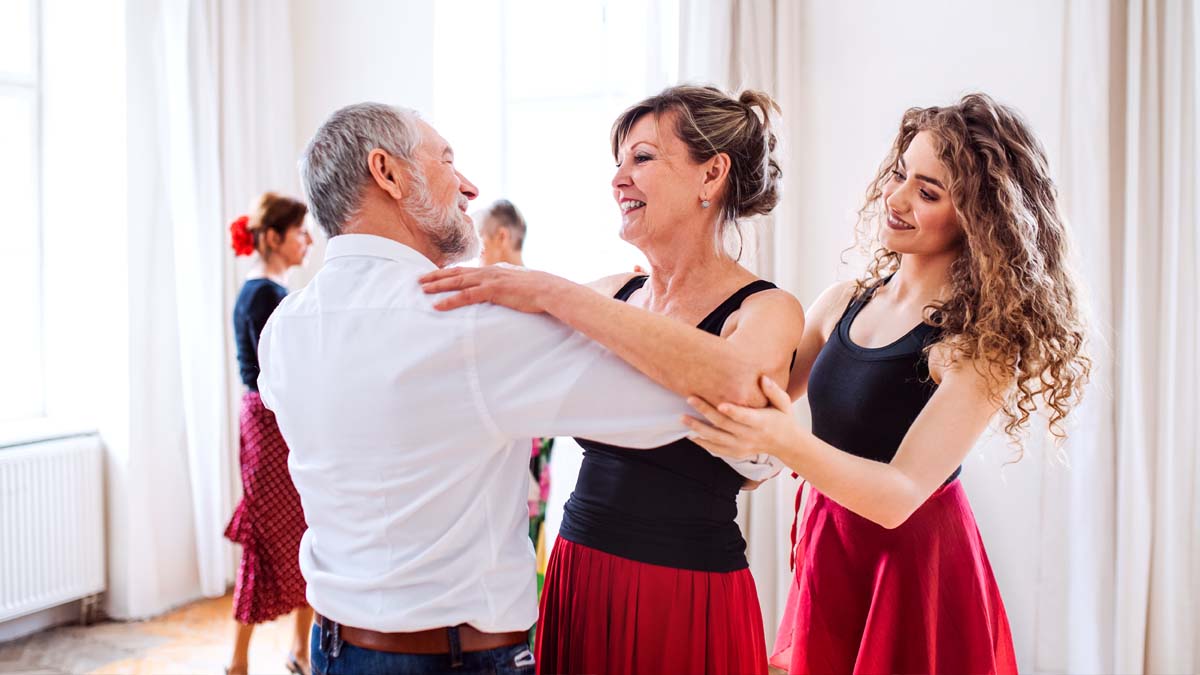For the past 17 years, Greenville resident Anna Stankiewicz has given dance lessons to more than 2,000 people.
She routinely sees youths and adults for many kinds of dances such as jazz, tap, ballet and Irish.
But lately she has noticed an increasing demand among both younger and older clients that none of them ever actually asks for: They want her to help them dance their way to better health.
“We average about 150 people each year, ranging in age from 2.5 years to adults,” said Stankiewicz, chief instructor of West End Dance Company, which she founded in 2007. “But regardless of their age, a lot of my clients are realizing that dancing gets your heart rate up, burns calories, helps with stretching and flexibility and builds endurance.”
And now, no matter where you go or what type of dancing you like or want to learn, more people than ever before are looking to dancing to keep them young, fit and in better overall health.
“Dancing is accessible to everybody,” said Dr. Lauren Elson, a former professional dancer, now a specialist in sports and rehabilitation medicine at Harvard Medical School. In a 2016 online article for Harvard Health, she noted, “[T]here are so many benefits of dancing — cognitive, physical, and social — that it merits consideration by everybody.”
For example, national data research firm Statista estimates that in 2022 in the United States alone, the number of participants in dance, step, and other choreographed exercise to music amounted to approximately 25.16 million.
While it might be nearly impossible to determine how many people dance for better health, the physical and mental benefits are definite and wide-ranging, and include:
- Improvement of heart and lungs.
- More muscular strength, endurance and motor fitness.
- Weight management.
- More aerobic fitness.
- Improved muscle tone.
- Stronger bones and reduced risk of osteoporosis.
- Better coordination, agility and flexibility.
- Improved balance and spatial awareness.
- Increased physical confidence. Greater self-confidence and self-esteem.
- Better social skills.
- Improved general and psychological well-being.
- Improved mental functioning.
“Dancing stimulates brain processes,” said Agnieszka Zygmont, dance therapist and doctor of physical culture with the University of Wrocław in Poland. In a 2023 online article for the National Institutes of Health, in Bethesda, Maryland, Zygmont stated, “Evidence shows that, together with the constant repetition of dance movement, the volume of the hippocampus (a brain structure that plays a major role in learning and memory) grows. And after as few as six weeks of such training, the amount of gray matter increases.”
She added that while ballroom dancing is especially good for the brain and nervous system, folk dances such as Korean and Turkish also improve the mood of senior citizens.
Ways to keep as much youth as possible in seniors have been touted for years as tantamount to overcoming old age and its diseases.
Consider, for instance, NIH currently estimates that 500,000 thousand to 1 million Americans are affected by Parkinson’s disease, long affiliated with seniors.
The primary motor symptoms of Parkinson’s include Bradykinesia (slowed movement), stiffness of the limbs and trunk, tremors, and impaired balance and coordination.
“It is these symptoms that dance may help alleviate,” said Daniel Tarsy, doctor of neurology with Harvard Medical School, in a 2015 interview. “A lot of this research is observational, not hard science, but it’s consistent and there’s a lot of it.”
More recently, in 2023, BioMed Central in the United Kingdom presented findings from a series of 10 studies involving 984 participants aged 55 years and over. Researchers determined that dance therapy significantly improved global cognitive function, memory, executive function, attention, language and mental health (i.e., depression and neuropsychiatric symptoms).
All of this may not be something you think about when you go dancing, but J.R. Duncan, owner of Arthur Murray Dance Studio of Charleston, said it’s now always part of his instruction.
“We typically have 300-400 new visitors each year, and maintain a student body of around 150 active students year round,” Duncan said. “And at least a third of our current students and maybe a quarter of all new students want to use dancing as a way to maintain or achieve a healthier lifestyle.”
He added that by the time everyone has gotten their fill of popular dances like the shag, salsa, rumba and swing, body fat and other unwelcomes are on the run.
“I have witnessed many situations where students will lose an average of 15-30 pounds easily,” Duncan said. “In addition, the mental health aspect of dancing is so prevalent, as we help with Alzheimer’s, high blood pressure, stress relief, poor posture, blood circulation and relationships.”
Based on reports by the international industrial research firm of IBISWorld, there are more than 10,700 dance studio businesses in just the United States alone — with demand rising for more places like Duncan’s Arthur Murray Dance Studio of Charleston, and Stankiewicz’s West End Dance Company.
“I have pretty much been dancing my whole life from age 3,” Stankiewicz said. “And I can’t think of a better activity for any age to get and stay healthy.”
By L. C. Leach III







